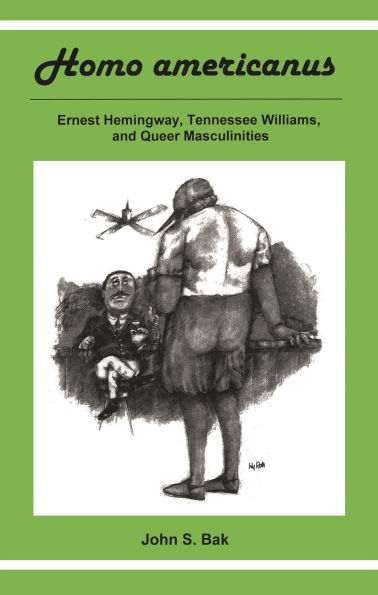Homo Americanus: ERNEST HEMINGWAY, TENNESSEE WILLIAMS, AND QUEER MASCULINITIES
Though separated by only eleven years in age, Hemingway and Williams seem literary generations apart. Yet both authors bridged their modernist/postmodernist divide through mutual examinations of the polemics behind heteromasculinity, Hemingway in The Sun Also Rises and Williams in Cat on a Hot Tin Roof. This book explores the two works many sociopolitical, literary, and intertextual ties, in particular how the conclusion of one echoes that of the other, not just in its irony but also in its implication of the audiences participation in engendering the social rules responsible for the protagonists struggle to negotiate his sexual identity. Hemingway's Sun shares more with Williams' Cat than just a similar ending, however. Both works explore more broadly the construction of a queer masculinity, where the parameters that define masculinity and sexuality grow as unstable and irresolute as the frontier during a war or the line of scrimmage during a football game.
1102295509
Homo Americanus: ERNEST HEMINGWAY, TENNESSEE WILLIAMS, AND QUEER MASCULINITIES
Though separated by only eleven years in age, Hemingway and Williams seem literary generations apart. Yet both authors bridged their modernist/postmodernist divide through mutual examinations of the polemics behind heteromasculinity, Hemingway in The Sun Also Rises and Williams in Cat on a Hot Tin Roof. This book explores the two works many sociopolitical, literary, and intertextual ties, in particular how the conclusion of one echoes that of the other, not just in its irony but also in its implication of the audiences participation in engendering the social rules responsible for the protagonists struggle to negotiate his sexual identity. Hemingway's Sun shares more with Williams' Cat than just a similar ending, however. Both works explore more broadly the construction of a queer masculinity, where the parameters that define masculinity and sexuality grow as unstable and irresolute as the frontier during a war or the line of scrimmage during a football game.
128.0
In Stock
5
1

Homo Americanus: ERNEST HEMINGWAY, TENNESSEE WILLIAMS, AND QUEER MASCULINITIES
306
Homo Americanus: ERNEST HEMINGWAY, TENNESSEE WILLIAMS, AND QUEER MASCULINITIES
306Hardcover
$128.00
128.0
In Stock

Product Details
| ISBN-13: | 9781611474299 |
|---|---|
| Publisher: | Bloomsbury Academic |
| Publication date: | 12/01/2009 |
| Pages: | 306 |
| Product dimensions: | 6.30(w) x 9.30(h) x 1.00(d) |
About the Author
From the B&N Reads Blog
